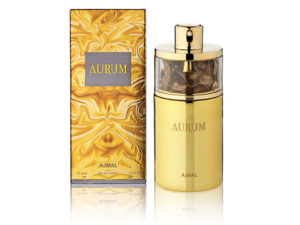Being Woman: A Perfume Genealogy
Upon reading Patrick Süskind’s (1985) Perfume: The Story of a Murderer, the visceral nature of scent as a feature of my being became apparent. As a cisgenderd white woman, I reflected on how I actively or passively, create my olfactory identity as a woman.
Süskind’s grand indulgence into scent and character forged an appreciation of smell as informing my identity. Geographical analyses into identity performance has been undertaken and by Butler (1990) and Goffman (1956). Gregson and Rose (2000), however posit a conception of performance which is not limited to the body – as with Butler and Goffman – but suggest spaces themselves are performative. Smell then ties together corporeal and spatial conceptualisations of performance as it exists on, around, and through both bodies and spaces (Classen, 1992). Thus I offer a genealogy of my versions of woman played out through perfume-use over a ten-year period, as capitalism seeks to gender smell, to sell.

My perfume journey begins with Harijuku Lovers’: Lil’ Angel perfume (figure 1). The packaging is rife with childish imagery: a large doll figure dressed in uniform and bubbled typography. The scent’s top notes include raspberry, middle of blossom and base of lollipop. As my early teen perfume, the intensely sweet scent suggests an effort to accentuate a playful youthfulness. More than this, I remember not necessarily enjoying the smell, finding it excessively sweet, but instead enjoyed the ritual of spraying it. Young children are known to dislike novel smells owing to a response called neophobia, a cautionary survival reaction to novel foods and odours (Herz, 2006).


My late teens to early twenties saw my interest in smell grow beyond the performance of perfume. Aurum by Ajmal (figure 2) with top notes of lemon, middle of blossom and a musk base and my third perfume: DKNY’s Be Delicious: Fresh Blossom (figure 3), which has ‘delicate’, ‘feminine’ scents (DKNY, 2019), show a dual performance of woman. Aurum was worn to social outings. Its marketed sensuality forced me to become aware of all aspects of my ‘attractiveness’ beyond the visual and intellectual. Aurum’s smell of a seductive ‘wild nature’ as suggested by Classen (1992), makes my use rooted deep within historical conflations of women with nature. Woman as an agent of chaos is explicitly exemplified by Eve as the bringer of The Fall of man in the Edenic Christian story (Merchant, 1996). Conversely, DKNY’s Fresh Blossom was clean and worn daily, working to neutralise my scent whilst maintaining a hint of sweetness (Reinarz, 2014). Both perfumes working to balance out my essentialised chaotic/pure nature as a woman.
Somerset House’s Perfume season in 2017 podcast (below) explores how perfumes were traditionally for the social elite, bought for not by women. It must be noted that all perfumes aforementioned were gifts and not my own purchases. I propose these perfumes embody both my personal doing of femininity, but also an outside perception of the woman I should and could be, through olfactory transformation.
Word Count: 496
Cover Image: Author’s own, 2019.
Bibliography
- Butler, J. (1990) Performative Acts and Gender constitution: An Essay in Phenomenology and Feminist Theory. In Case, SE. (Ed.) Performing Feminisms: Feminist Critical Theory and Theatre. Baltimore: Johns Hopkins University Press.
- Classen, C. (1992) The Odour of the Other: Olfactory Symbolism and Cultural Categories, Ethos, 20(2), pp. 133-166.
- DKNY. (2019) DKNY BE DELICIOUS FRESH BLOSSOM | DKNY Fragrances. [online] Dknyfragrances.co.uk. Available at: http://dknyfragrances.co.uk/fragrances/dkny-fresh-blossom/ [Accessed 7 Mar. 2019].
- Goffman, E. (1959) The Presentation of the Self in Everyday Life. Garden City: Doubleday Anchor Books.
- Gregson, N. and Rose, G. (2000) Taking Butler Elsewhere: Performativities, spatialites and subjectivities, Environment and Planning, 18, pp. 433-452.
- Herz, R. (2006) I Know What I Like: Understanding Odour Preferences. In Drobnick, J. (ed.) The Smell Culture Reader. Oxford: Berg, pp. 190-206.
- Merchant, C. (1996) Earthacre: Women and the Environment. London: Routledge.
- Reinarz, J. (2014) Past Scents: Historical Perspectives on Smell. Urbana, Chicago and Springfield: University of Illinois Press.
- Süskind, P. (1986) Perfume: The Story of a Murderer (translated by John E. Woods). New York: A.A. Knopf.


